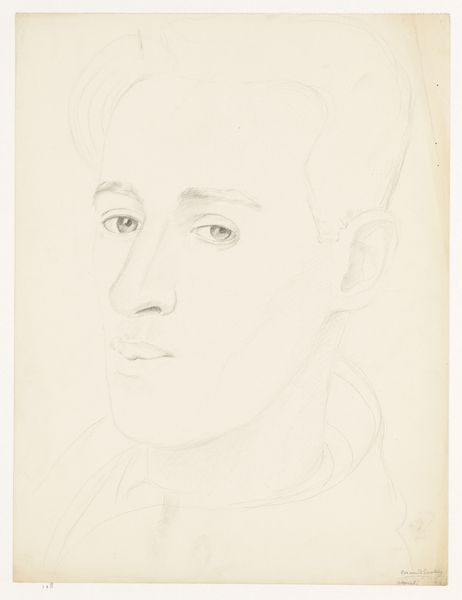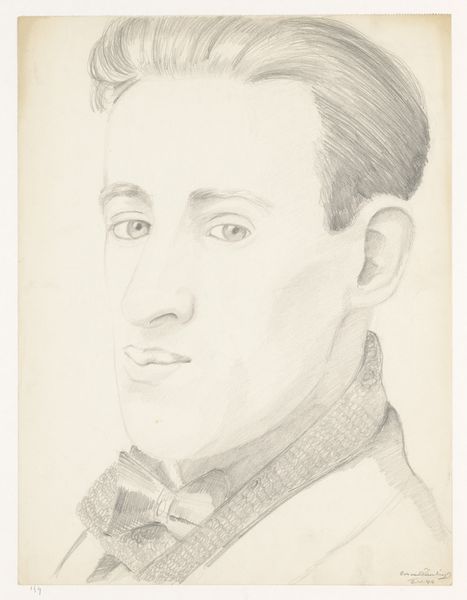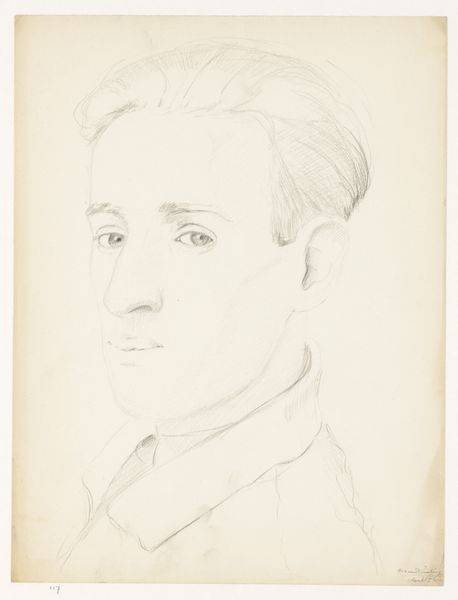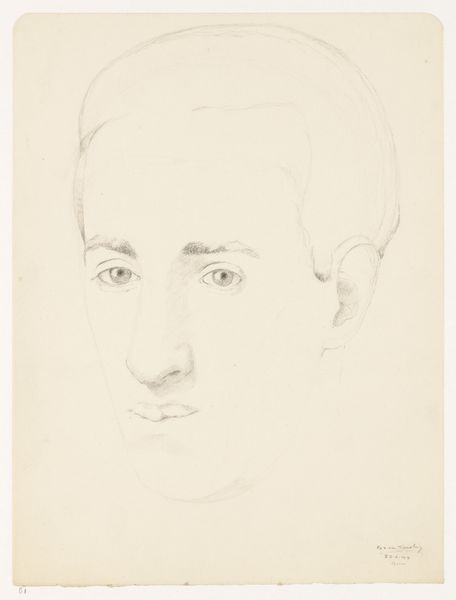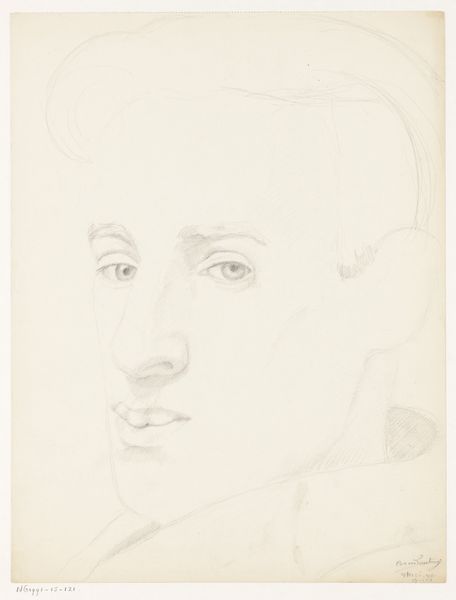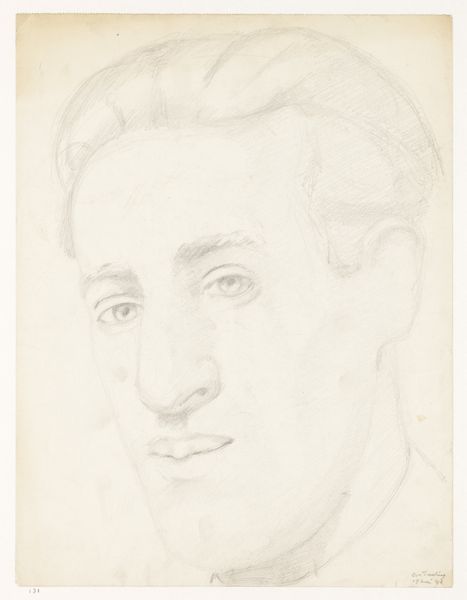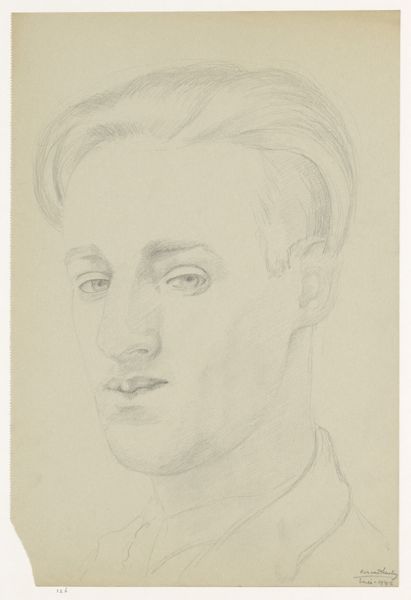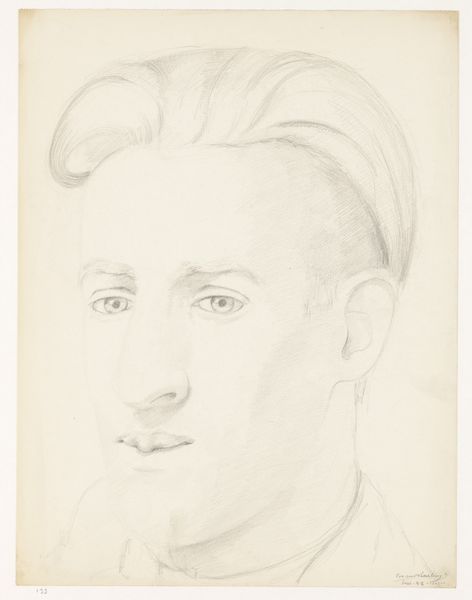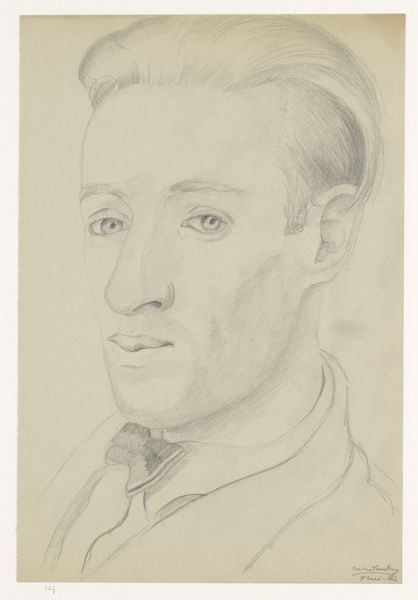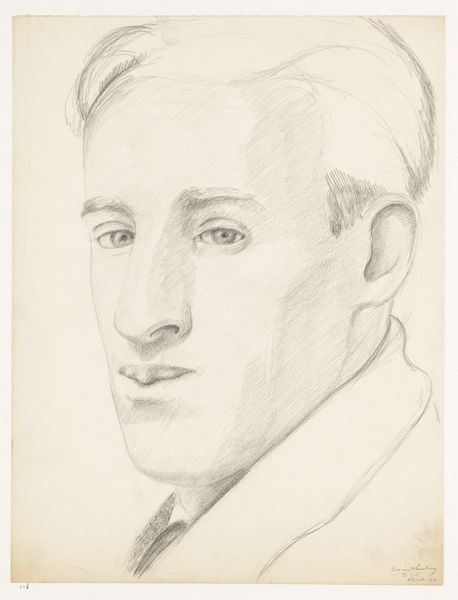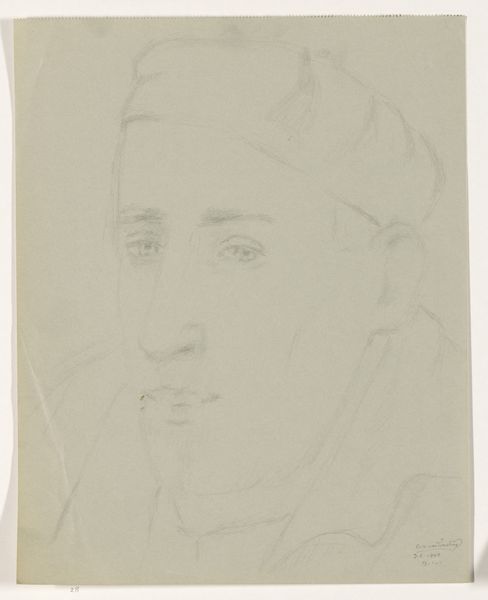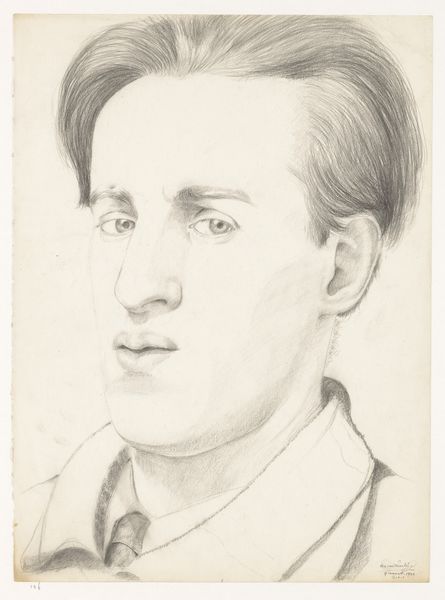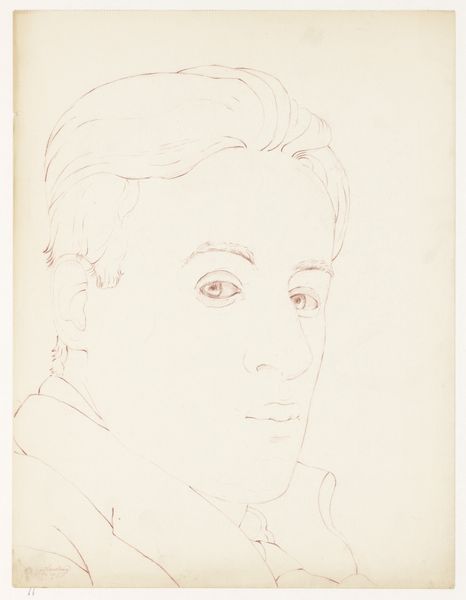
drawing, pencil
#
portrait
#
drawing
#
figuration
#
pencil drawing
#
pencil
#
realism
Dimensions: height 475 mm, width 345 mm
Copyright: Rijks Museum: Open Domain
Curator: This drawing, titled *Zelfportret van Victor Tischler, van voren*, made with pencil, dates sometime between 1905 and 1930. Editor: The detail in the rendering of the face is quite compelling, compared to the more sketch-like depiction of everything else. What can you tell me about this portrait, keeping in mind how it was made? Curator: From a materialist perspective, consider the availability and affordability of the pencil itself during that time. A humble, readily accessible tool capable of producing both the fine details of the face and the broad, suggestive strokes outlining the background. What does it suggest to you, this contrast? Editor: Perhaps the pencil, through its versatile use, becomes a metaphor for the artist's ability to navigate different social strata, from personal reflection to wider contextual awareness. I also wonder about paper, since it's much easier and quicker to access paper than paint or canvas! Curator: Precisely. Notice how the pencil marks are layered, creating textures that mimic different materials – the rough brickwork, the soft fabric of the clothing. Tischler isn't just depicting these things; he's translating their material essence through the labor of mark-making. Do you think there's a political aspect in this artistic choice? Editor: That's an interesting point. Choosing such a common, easily obtainable medium to create what is traditionally seen as 'high art', almost feels like a democratic statement of sorts. The work is of the person, but with a common medium. Curator: Precisely. Tischler uses mundane materials to confront notions of status. The materials of creation highlight themes of social class, particularly the dignity of ordinary materials and common labor, pushing artistic and class boundaries. Editor: It really changes how I view the piece to think about the physical and material implications of creating art like this. Thanks! Curator: Indeed! Reflecting on materials allows a much richer, contextualized way of appreciating artwork.
Comments
No comments
Be the first to comment and join the conversation on the ultimate creative platform.
